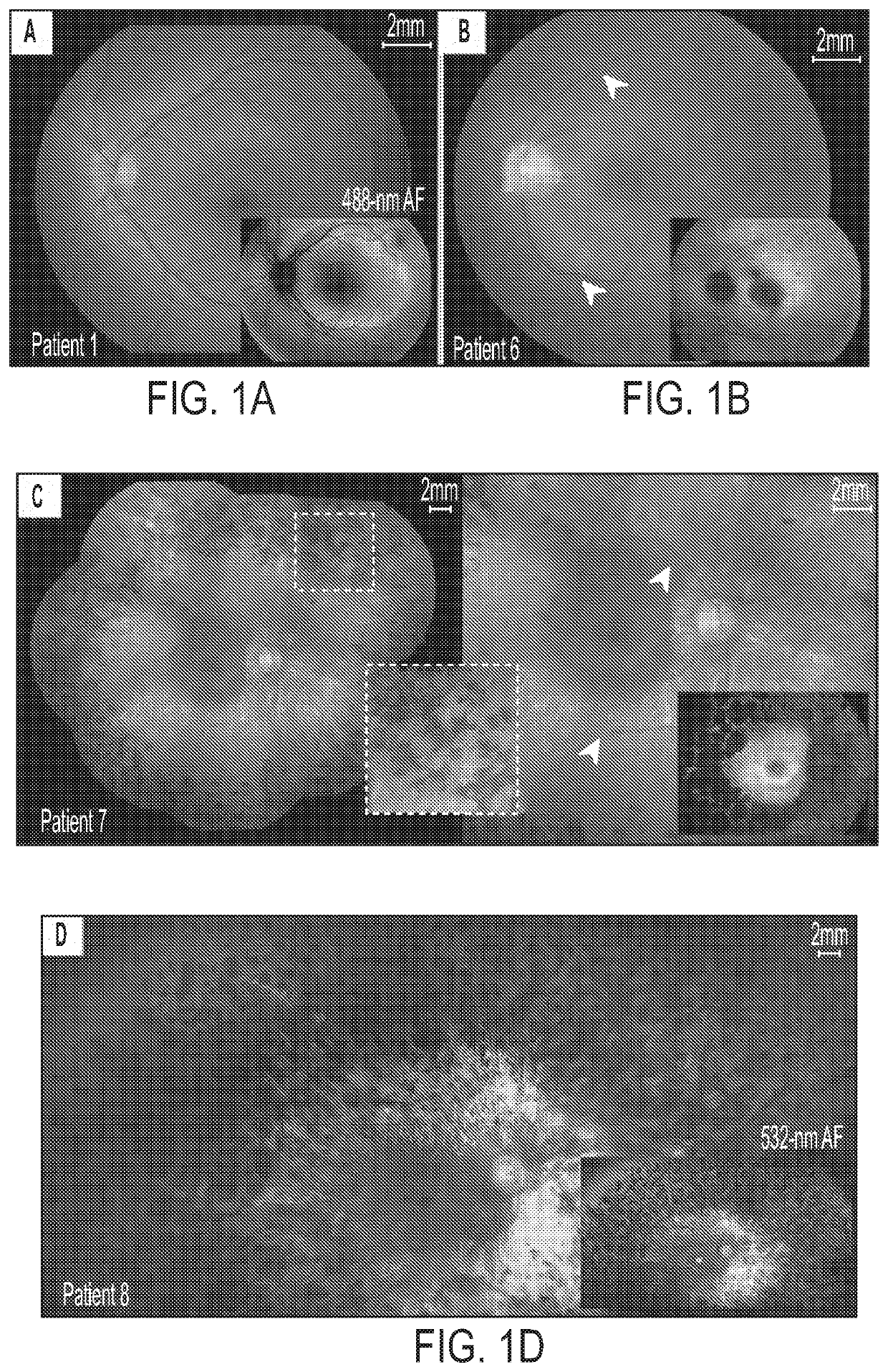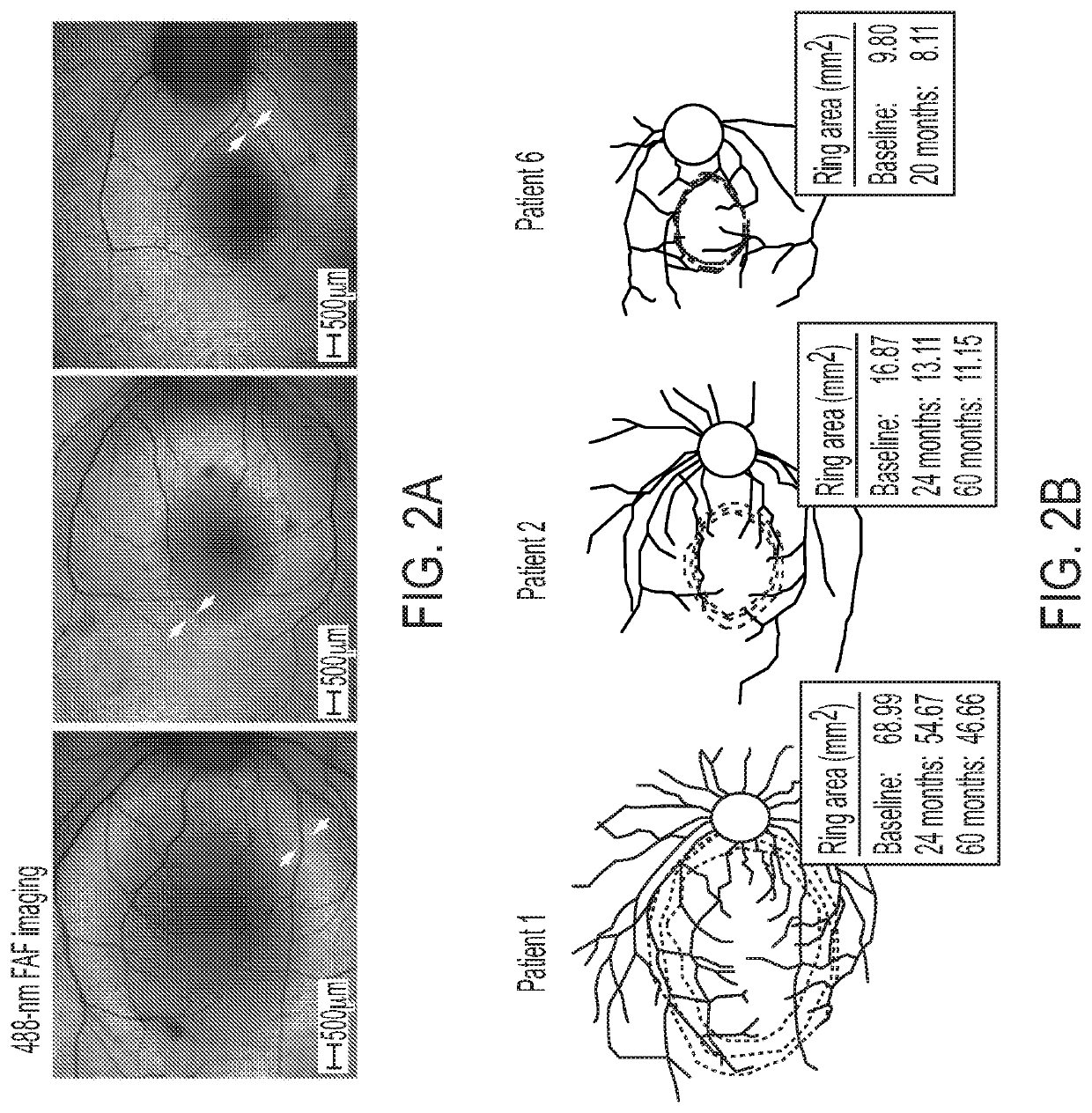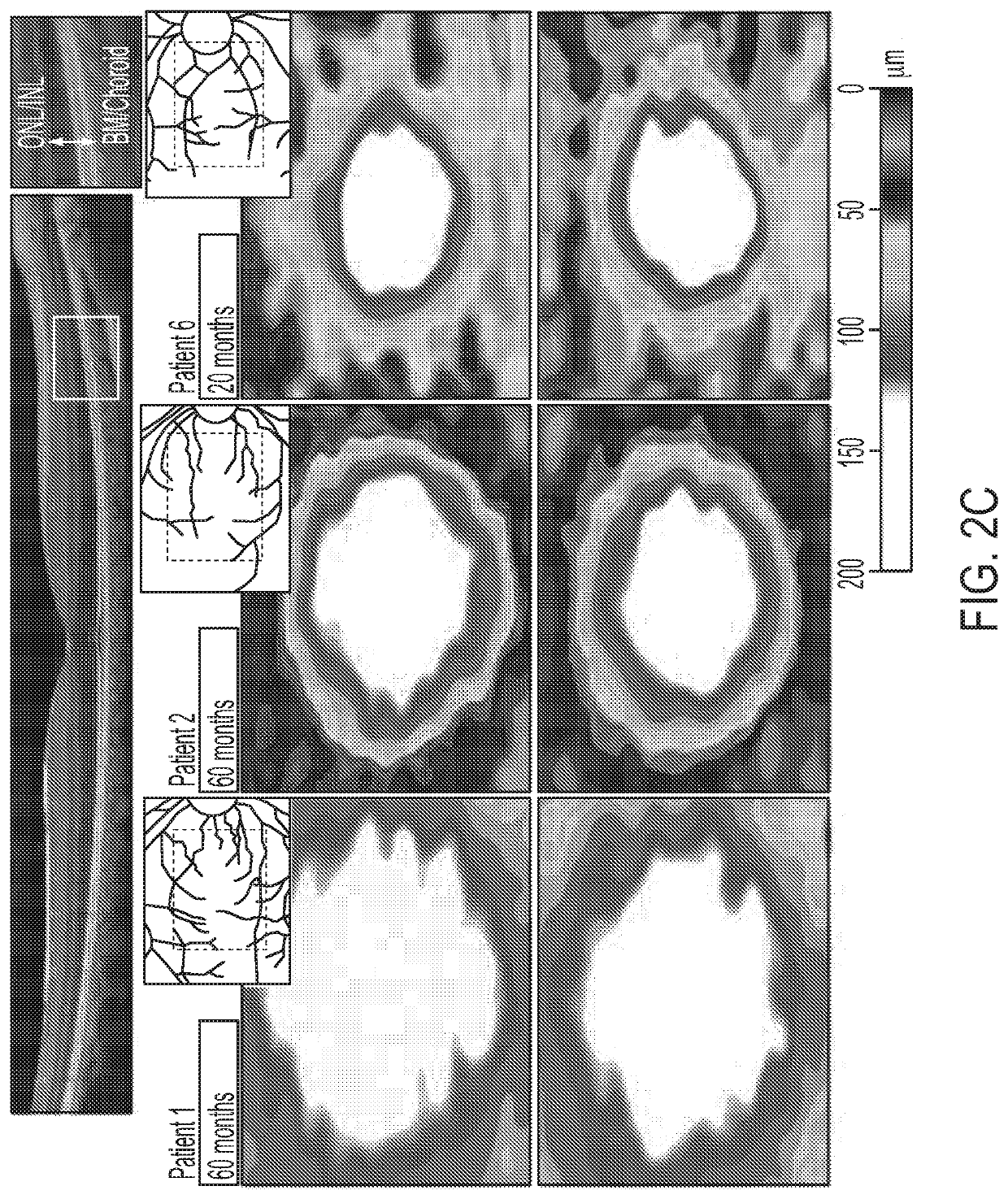Enhanced human opsin promoter for rod specific expression
- Summary
- Abstract
- Description
- Claims
- Application Information
AI Technical Summary
Benefits of technology
Problems solved by technology
Method used
Image
Examples
example 1
and Methods
[0122]Patients with mutations in CNGB1 have night blindness from childhood, with a slow loss of photoreceptors. Their phenotype is similar to that of the Cngb1-X26 mouse and the CNGB1− / − dog. A mouse model, Cngb1-X26, generated by excising exon 26 and resulting in loss of the full-length CNGβ1a protein, was reported to have a significant decrease in rod function and retinal degeneration (27). Gene augmentation therapy was shown to rescue the phenotype in this model (28). A spontaneous mutation in canine Cngb1 was identified in dogs with recessively inherited progressive retinal degeneration (29). Early loss of rod vision and slow photoreceptor degeneration were observed (29). The canine mutation is downstream of the Garp region and results in a lack of full-length Cngb1a, thus modeling the majority of reported RP45 cases and closely resembling the Cngb1-X26 mouse model.
Human Patients
[0123]Complete ophthalmic examinations included slit-lamp and dilated fundus examinations....
example 2
ient Assessment
[0139]Human patients with RP45 show early loss of night vision and a slowly progressive photoreceptor degeneration. Clinical and genetic characteristics of each patient are summarized in Table 1. The cohort (n=8) consists of 4 sporadic cases and 2 sibling pairs, with a mean age of 37.1 years (range, 14-70 years). Five of the patients are of European descent (patients 3-6 and 8) and three are Hispanic (patients 1, 2, and 7). A total of 8 different CNGB1 mutations were identified. Three of the mutations had been previously described in RP45 patients: c.2284C>T, p.Arg762Cys (16, 30); c.1896C>A, p.Cys632* (15); c.3150delG; and p.Phe1051Leufs*12 (15, 22). Five novel mutations (1 nonsense, 2 frameshift, and 2 intronic / splice) were detected: c.2508C>A, p.Tyr836*; c.522_523insC, p.Lys175Glnfs*4; c.2544_2545insC, p.Leu849Profs*3; c.1122-9G>A; c.2218-2A>G (Table 1 and Table 2). The 2 novel intronic mutations were found in patient 4. c.2218-2A>G resides in a canonical splice acc...
example 3
t of Mouse Models
[0142]Cngb1− / − mice show a progressive loss of retinal thickness with a slow loss of cones. Cngb1− / − (Cngb1-X26) mice have progressive retinal thinning accompanied by a progressive loss of photoreceptors and their function (FIG. 3). The age-related loss of outer retinal thickness (REC+ layer) was measured by in vivo cross-sectional SD-OCT imaging (FIG. 3A). Cngb1− / − mice showed a slowly progressive, almost linear thinning of the REC+ layer within the observed time frame of 2 to 52 weeks of age. While rod photoreceptors degenerated, cone morphology was also compromised, as indicated by a loss of cone outer segments (FIG. 3B). This is in keeping with the progressive loss of cone function during photoreceptor layer thinning that was detected by photopic ERG measurements (FIG. 3C).
PUM
| Property | Measurement | Unit |
|---|---|---|
| Fraction | aaaaa | aaaaa |
| Fraction | aaaaa | aaaaa |
| Fraction | aaaaa | aaaaa |
Abstract
Description
Claims
Application Information
 Login to View More
Login to View More - R&D
- Intellectual Property
- Life Sciences
- Materials
- Tech Scout
- Unparalleled Data Quality
- Higher Quality Content
- 60% Fewer Hallucinations
Browse by: Latest US Patents, China's latest patents, Technical Efficacy Thesaurus, Application Domain, Technology Topic, Popular Technical Reports.
© 2025 PatSnap. All rights reserved.Legal|Privacy policy|Modern Slavery Act Transparency Statement|Sitemap|About US| Contact US: help@patsnap.com



